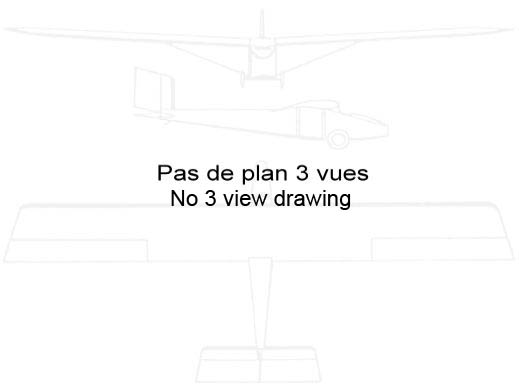
HAL X-241
Autre nom (ou nom en langue originelle) : HF-24 Marut| DONNÉES GÉNÉRALES |
| Année du premier vol (ou de design, si seul projet) |
1955 |
| Pays | Inde |
| Designer(s) | TANK, Kurt |
| Premier constructeur | HAL (Hindustan Aircraft Ltd), Inde. |
| Type d'appareil | Planeur |
| Fonction | Expérimental |
| SPÉCIFICATIONS TECHNIQUES |
| Envergure | -- |
| Longueur | -- |
| Hauteur | -- |
| Allongement | -- |
| Surface alaire | -- |
| Profil aile | -- |
| Masse à vide | -- |
| Masse maxi | -- |
| Charge alaire | -- |
| Vitesse mini | -- |
| Vitesse maxi | -- |
| Finesse maxi | |
| Taux de chute mini | -- |
| Nb sièges | 2 |
| Structure | Bois |
AUTRES INFORMATIONS
| Constructeur(s) |
| ||||||
| Infos techniques | -- | ||||||
| Histoire résumée | After World War II, severe limitations were re-imposed on German designers. Messerschmitt moved to Spain to avoid them and Tank to Argentina. When India wanted to develop a fighter aircraft, both of them offered their help. We chose Prof. Tank as the better designer while without a doubt Messerschmitt was the better aircraft constructor. Professor Kurt Tank arrived in India in 1955 with a team of sixteen other Germans to begin work on the HF-24. It was not very surprising when their first job was to design and manufacture a plywood glider version of the HF-24. This was a full 1:1 scale aircraft with the airframe geometry and even the thickness chord ratio of the wing (at 6%) exactly equal to the projected fighter aircraft. The glider body was almost entirely made of locally available plywood. Adhesives for joining parts were imported from Germany. However, it was a rather well equipped glider. It was designed for two pilots in tandem seating. The HF-24 [marking X-241] glider was fitted with a pneumatic air bottle to retract undercarriage and to operate brakes, flaps and airbrakes. The bottle when fully charged could work all these services and retract or lower the undercarriage several times before running out of pressure. For all except two flights, the rear cockpit was unoccupied. Just above where the head of the pilot in the rear seat would have been, a camera was installed. This took pictures at short intervals of the instrument panel to record the readings for subsequent analysis. No trace recorders were installed. An anti-spin parachute was provided but it was not possible to accommodate an ejection seat. The cockpit layout was as close as possible to the intended fighter aircraft. The towing for the first and all later flights was done with a Dakota Mk IV (BJ 449). This aircraft had Pratt & Whitney R-2000 engines and its rudder had a balance tab to cope with an engine failure. Wing Commander Roshan Lal Suri, the senior-most test pilot in India had been deputed to HAL to work on the HF-24 project. With him in the glider, it was first launched on 3rd April 1959. On my third flight (86th of the glider) with Gp Capt S Chenna Keshu in the rear seat, the glider was damaged during landing with the nose wheel retracted which had failed to come down. It never flew again. | ||||||
| Liens personnalités | TANK Kurt Waldemar (Allemagne) | ||||||
| Compléments docs |
SOURCES DOCUMENTAIRES
| Liens WEB | Site : Barat Rakshat - Indian Air Force . Texte + 2 photos. (2014-06-08 CL) |
| Livres | Pas de livre référencé. |

Team J2mcL © 2003 -
- Pages optimisées pour Mozilla Firefox

